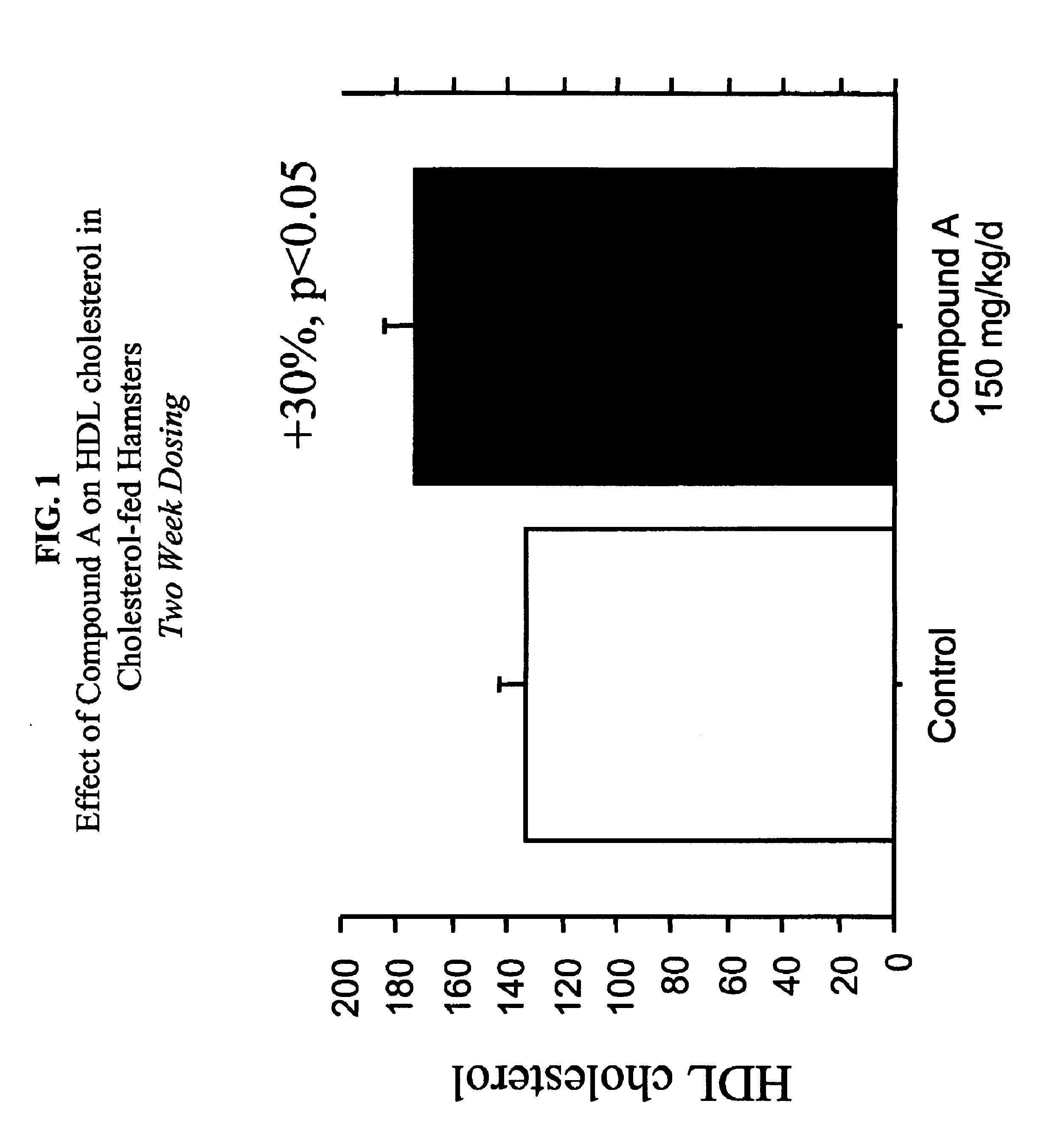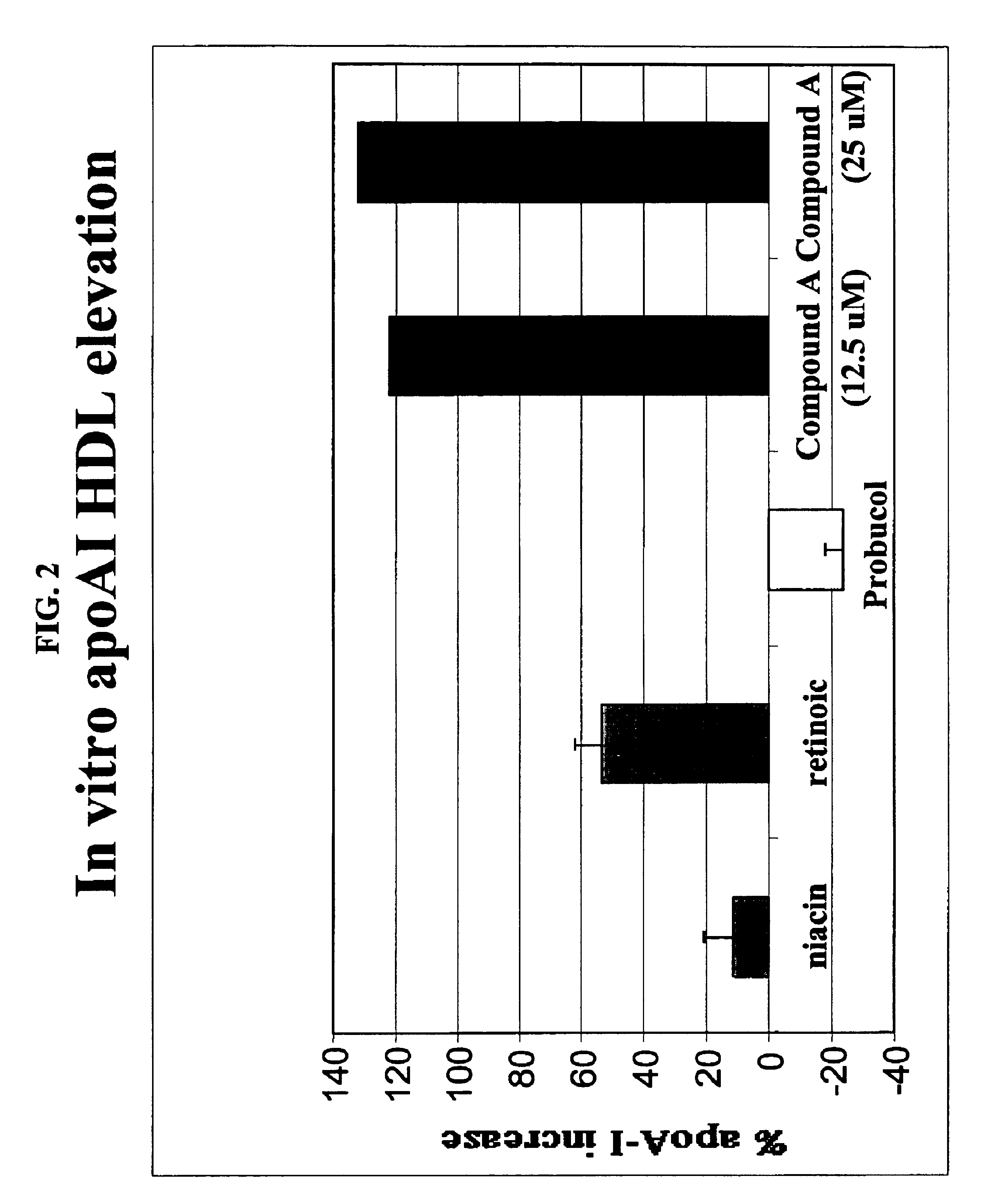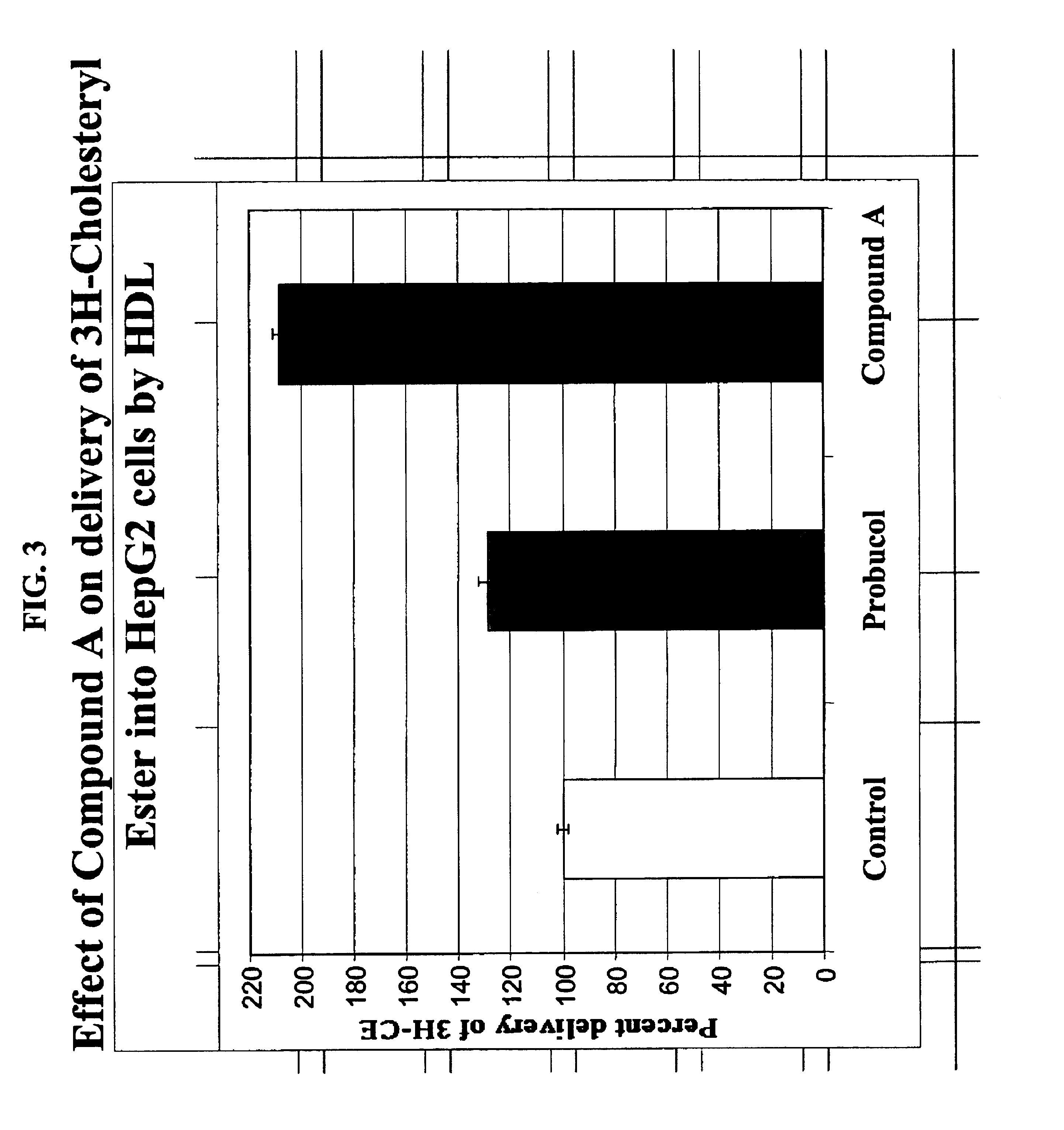Compounds and methods to increase plasma HDL cholesterol levels and improve HDL functionality
a technology of plasma hdl cholesterol and hdl function, which is applied in the direction of drug compositions, instruments, metabolic disorders, etc., can solve the problems of limiting chronic use, small hdl particles susceptible to renal filtration and degradation, and ischaemia or infarction, so as to increase the circulating hdlc level, increase the selective uptake of cholester, and improve the effect of hdl
- Summary
- Abstract
- Description
- Claims
- Application Information
AI Technical Summary
Benefits of technology
Problems solved by technology
Method used
Image
Examples
example 1
[0303]
5-[4-[1-[(3,5-bis(1,1-dimethylethyl)-4-hydroxyphenyl)thiol]-1-methylethyl]thio-2,6-bis(1,1-dimethylethyl)phenoxy]-2(R),3(R),4(R)-trihydroxypentanoic Acid (“Compound A”)
[0304]A mixture of D-(+)-ribonic gamma-lactone (5.2 g), triethyl orthoformate (148.2 g) and THF (100 mL) was stirred at reflux for 16 h. The mixture was evaporated under reduced pressure to give a solid residue (6.9 g), 1 g of which was mixed with probucol (3 g), triphenylphosphine (1.54 g) and diethyl azodicarboxylate (0.93 mL) in THF (40 mL). The mixture was stirred at reflux for 3 h and then evaporated to a residue. Chromatography on silica gel gave the expected ether product (0.46 g), 0.45 g of which was suspended in a mixture of acetic acid and water (8:2, 10 mL). The suspension was stirred at room temperature for 3 h. Methanol was added until the mixture became a solution. The mixture was then stirred at reflux overnight. Most of the solvent was removed at reduced pressure and the remainder was neutralized...
example 2
[0305]
Sulfuric Acid, Mono-(4-{2,6-di-tert-butyl-4-[1-(3,5-di-tert-butyl-4-hydroxy-phenyl-sulfanyl)-1-methylethylsulfanyl]-phenoxy}-butyl)ester (“Compound “B”)
[0306]EX-2A)
[0307]A solution of probucol (2.58 g, 5 mmol) in 50 mL of THF was treated with 4-hydroxy-butyl acrylate (1 mL, 10 mmol), triphenylphosphine (2.62 g, 10 mmol), and diethyl azo-dicarboxylate (1.57 mL, 10 mmol). The resulting mixture was stirred under reflux for 3 days then cooled to room temperature. The solvent was evaporated. Purification of the crude material by column chromatography (SiO2; 4:1 hexanes-CH2Cl2) gave the desired ether product as a brown oil (0.92 g).
EX-2B)
[0308]The product from EX-2A (0.82 g) was suspended in methanol (20 mL) then treated with potassium carbonate (0.5 g). The resulting mixture was stirred at room temperature overnight. The mixture was then poured into water (50 mL), and extraction was performed with Et2O (2×50 mL). The combined ether extracts were dried, and solvent was removed by ...
example 3
[0310]Related compounds can be prepared by one skilled in the art using methods previously described in WO 98 / 51662 and U.S. Pat. No. 6,147,250, as summarized below in Example Table 1.
[0311]
TABLE 1ExampleExampleStructureDesignationNo.Compound C3aCompound D3bCompound E3c
PUM
| Property | Measurement | Unit |
|---|---|---|
| Volume | aaaaa | aaaaa |
| Volume | aaaaa | aaaaa |
| Volume | aaaaa | aaaaa |
Abstract
Description
Claims
Application Information
 Login to View More
Login to View More - R&D
- Intellectual Property
- Life Sciences
- Materials
- Tech Scout
- Unparalleled Data Quality
- Higher Quality Content
- 60% Fewer Hallucinations
Browse by: Latest US Patents, China's latest patents, Technical Efficacy Thesaurus, Application Domain, Technology Topic, Popular Technical Reports.
© 2025 PatSnap. All rights reserved.Legal|Privacy policy|Modern Slavery Act Transparency Statement|Sitemap|About US| Contact US: help@patsnap.com



